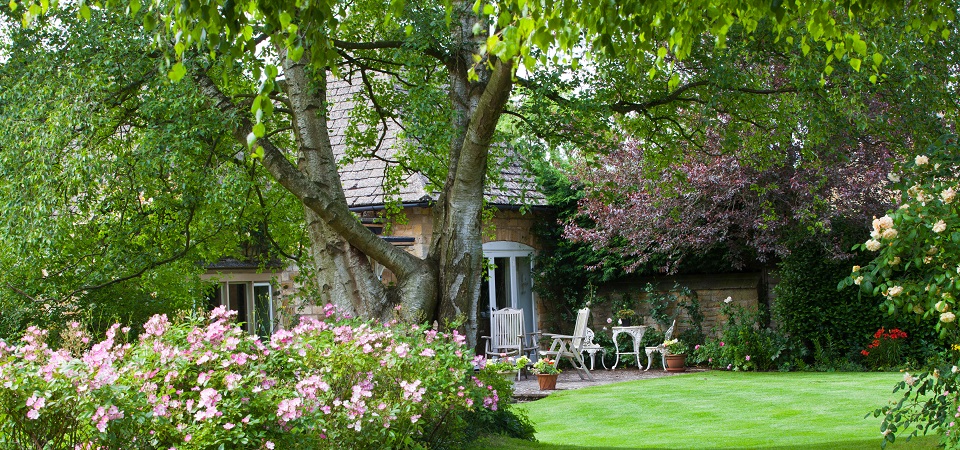With house prices on the rise across the country, many homeowners are opting to extend their current homes rather than moving house. It may therefore come as a shock to some potential ‘house-extenders’ that they have a protected tree in the garden that will prevent them from doing so.
Nicola Phelps, director and property specialist at Woodcocks Haworth and Nuttall Solicitors, provides a guide to tree protection, highlighting the importance in checking the status of any trees on your property before making plans to build or extend your home.
Trees can be protected in number of ways – firstly by being subject to a specific Tree Preservation Order (TPO), or simply because your house is in a conservation area.
If building extension plans may potentially affect a tree in your garden, it would be prudent to check first whether your property is in a conservation area, or if the tree is protected by a TPO. This can be confirmed by contacting the planning officer in your local authority (which can be done online).
Trees in conservation areas
If a tree on a property in a conservation area is over 75 mm in diameter and standing 1.5 m above ground level (or more than 100 mm in diameter if reducing the number of trees to benefit the growth of other surrounding trees), you must give your local planning authority six weeks’ notice before carrying out any works on the trees.
This gives the authority an opportunity to consider whether a TPO should be made to protect the tree.
Tree works include not just chopping down trees, but also pruning, lopping, topping, crown raising, felling and uprooting trees.
There are some exceptions to this requirement, including when the tree is dead, dying or that the tree has become dangerous. Even in these circumstances, you should still give at least five working days’ notice before any work starts to remove the tree.
Where a tree in a conservation area has been removed illegally, or because it is dead, dying, dangerous or causing a nuisance – by law a replacement tree must be planted. The replacement tree must be of an appropriate size and species in relation to the one removed.
The local planning authority can enforce this requirement and ultimately can come onto the private land to carry out the planting and then recover the cost from the owner.
During the six-week notice period the local authority will decide whether to make the tree subject to a TPO. If you do not receive a decision within six weeks, you can assume consent is granted. If the tree is given a TPO you will need to apply for consent in accordance with the TPO rules.
It is possible to challenge a new granting of a TPO but it is strongly advised to take legal advice prior to challenging any preservation order.
Trees subject to a Tree Preservation Order
A TPO protects trees, this means it is a criminal offence (subject to some exceptions) to cut down, top, lop, uproot, wilfully damage or destroy any tree to which the TPO relates.
Two recent cases demonstrate the stance that courts are prepared to take on breaches of TPOs, which is both firm and punitive. The cases demonstrate the courts may not only impose the fines available to them, but that, under the Proceeds of Crime Act, there is a right to recover financial gain earned by the perpetrators committing the crime.
In one case a substantial fine of £75,000 was ordered but also, a further £50,000 was imposed to cover the consequent increase in value of the property as a result of the work carried out to the tree.
In another case where a large oak tree in a garden was casting shade – the owner decided to cut back some of the long branches to allow more sunlight into the garden.
The tree was protected by a TPO and the relevant consents had not been obtained. On top of the fine the owner was also ordered to pay a further £21,750 which was assessed to be the increased value to the house imposed in accordance with the Proceeds of Crime Act.
Exemptions to Tree Prevention Regulations
As mentioned previously, there are some exemptions to the Tree Preservation Regulations. Local authorities will not prevent cutting down, topping, lopping or uprooting a tree if:
- it is dead
- it is needed to implement a planning permission
- it is good horticultural practice
- it is urgently needed to remove an immediate risk of harm
- removal of dead branches from a living tree
- it is required to abate a nuisance; or
- it is needed to comply with an obligation under an Act of Parliament.
So, if you have an established tree in your garden that may be affected by any plans to build or extend your property, you should always:
- Check whether you are in a conservation area and/or whether the tree is subject to a TPO.
- Check whether any works to the tree that you wish to carry out are prohibited by virtue of your property being in a conservation area and/or the tree being subject to a TPO.
- Check whether there is an applicable exemption.
Protecting trees is becoming an increasingly important part of preserving our natural environment. Established trees, which can often be rare species, are protected for a wide range of reasons and are particularly valuable for biodiversity.
So, before you plan to build or extend you home – check the status of your trees and remember – not complying could be costly.
Nicola is a director based at Woodcocks, Haworth and Nuttall’s Clitheroe office and specialises in all types of property development, including office, industrial, retail and residential estates. She advises on the whole process from land acquisition to site set up and onward sale.
To contact Nicola, call 01200 408300 or email nicola.phelps@whnsolicitors.co.uk













